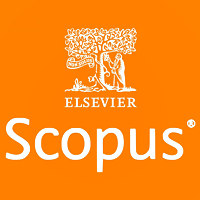
This article is an open access article distributed under the terms and conditions of the Creative Commons Attribution license (CC BY).
ORIGINAL RESEARCH
Prognostic value of procalcitonin rapid test in purulent inflammatory diseases of the maxillofacial region
1 Maxillofacial Hospital for War Veterans, Pirogov City Clinical Hospital No. 1, Moscow, Russia
2 Pirogov Russian National Research Medical University, Moscow, Russia
Correspondence should be addressed: Kirill D. Zavgorodnev
Lesteva, 9, Moscow, 115191, Russia; ur.liam@41emehz
Author contribution: Belchenko VA, Chantyr IV — study concept and design; Chantyr IV, Zavgorodnev KD — data acquisition and processing; Zavgorodnev KD, Pakhomova YuI — statistical data processing; Chantyr IV, Zavgorodnev KD, Pakhomova YuI — manuscript writing; Pakhomova YuI — illustrating; Belchenko VA — editing.
Dental diseases, which exhibit high prevalence within the population, are frequently complicated by odontogenic inflammatory processes in the maxillofacial region (MFR), posing a significant risk of systemic septic complications. Procalcitonin (PCT) is a promising biomarker for the diagnosis of sepsis showing high sensitivity and specificity. However, its prognostic value for purulent inflammatory diseases of the maxillofacial region (PID-MFR) is still understudied. The study aimed to evaluate the diagnostic value of the PCT semi-quantitative rapid test for predicting septic complications in patients with PID-MFR and to evaluate the relationship between PCT levels and clinical/laboratory parameters. The study involved 60 patients (73.3% males, 26.7% females) aged between 21 and 71 years with PID-MFR. Serum PCT levels were determined by a semi-quantitative method. Patients were stratified into two groups: group 1 with PCT > 0.5 ng/mL (23.3%), group 2 with PCT < 0.5 ng/mL (76.7%). Septic complications were observed in 28.57% of patients in group 1, whereas no complications occurred in group 2 (p = 0.001; OR = 0.025). There were no significant differences in clinical and laboratory indicators, number of cellular maxillofacial spaces affected (3.7 ± 1.7), disease duration (5.17 ± 3.39 days), and length of hospital stay (6.50 ± 2.41 bed-days) between groups (p > 0.05). Our findings demonstrate that measuring PCT levels via a semi-quantitative method is an effective and accessible approach to predict septic complications of PID-MFR.
Keywords: procalcitonin, sepsis, purulent inflammatory diseases, maxillofacial region
